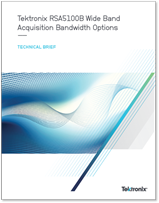Two dynamic range options are available in the RSA5100B series real time spectrum analyzers. Standard dynamic range provides 75 dB spurious free analysis, and high dynamic range options increase this performance to at least 80 dB and beyond. This paper examines spurious elements including digitizer intermodulation and intermediate-frequency harmonic distortion products, with notes on temperature effects and spurious stability. Customers developing high performance radar, communications and other transmitters need to test their products to demanding dynamic range specifications. Spectrum managers performing interference hunting and compliance testing have similar requirements to ensure that signals under investigation are not a product of the measurement tool used. These requirements place high demands on test equipment for dynamic range.


